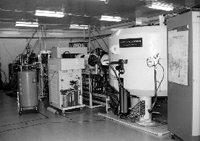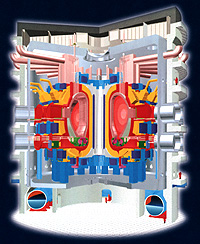 |
|||||||||
Welcome !!
Extensive research, both experimental and theoretical, has been pursued in our laboratory concerning dynamic response of materials strength under in-situ irradiation with energetic particles. This subject is very crucial for the core structural materials in both fusion and fission reactors. We are trying to establish its mechanisms, scientific estimation methods and the way to cope with it.
Our laboratory is also a part of Department of Advanced Energy Engineering Science, Interdisciplinary Graduate School of Engineering Sciences, Kyushu University. Graduate students take most of their class works in the first semester at Tsukushi Campus, Kyushu, and then move to National Institute for Materials Science in Tsukuba and join our research group.
Major Research Fields
(1) Irradiation Induced Deformation
In the environments of fusion reactors such as ITER, International Thermonuclear Experimental Reactor, or the core of light-water fission reactors, materials are exposed to intensive irradiation with energetic particles like neutrons and gamma rays. Such severe irradiation displaces lots of atoms from lattice sites and produces plenty of point defects, interstitial atoms and vacancies. Under externally applied stress these point defects directly and dynamically induce very active deformation, known as irradiation creep or irradiation-induced stress relaxation.
We have been studying these phenomena by computer simulation and in-situ irradiation experiments using the cyclotron accelerator. We are also extending the results of our basic research to the actual materials in the operating light-water fission reactors in cooperation with reactor manufacturers.
(2) Fatigue Behavior under Irradiation
Fatigue fracture is one of the most critical degradation of structural materials not only for the nuclear application but also for any industrial usage. We have recently started research on the fatigue properties of materials, low-activation fusion reactor materials and light-water fission reactor materials in particular, under in-situ irradiation with energetic particles and consequent dynamic activities of point defects.
Using our cyclotron accelerator, we have already found out that the fatigue behavior of SUS 316 stainless steel under such in-situ irradiation is quite different from those of unirradiated and post-irradiation conditions. Now we are extending our research to study advanced nuclear materials and also to reveal its mechanisms. Please refer to the "Metal Fatigue under High-Energy Particle Bombardment" in our "Recent Results" page for more detailed information.
NIMS Cyclotron Accelerator
The
ITER-FDR Tokamak
(from ITER-EDA brochure)

